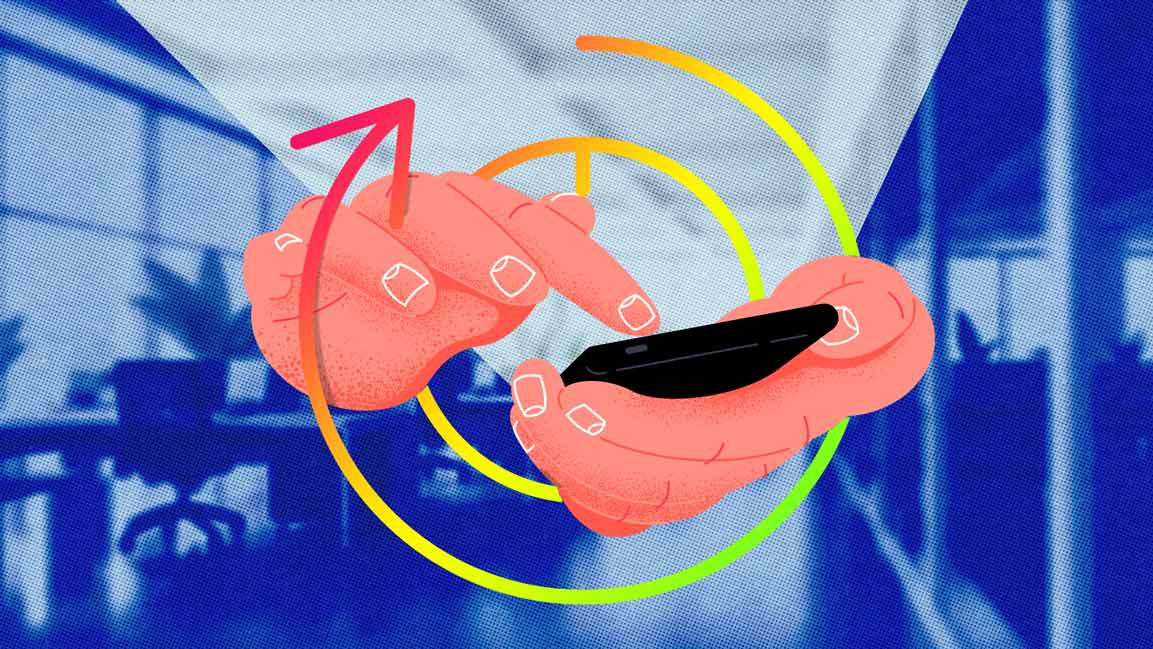- | 9:00 am
Stress in the workplace is prevalent in the Middle East. Here’s how to create screen-work balance
Experts address the consequences of excessive screen time and its impact on mental health and productivity

‘You spent 6 hours and 40 minutes on your screen last week,’ a notification pops up. You scroll past it nonchalantly. Several studies have shown that the world’s average screen time is around that figure.
Digital burnout remains a significant challenge for the workforce in the Middle East, with the increasing reliance on digital tools for daily operations. Employees spend more hours in front of screens, leading to heightened stress, fatigue, and mental exhaustion.
Daily stress is more common among employees in the Middle East and North Africa (MENA) region than in other parts of the world. According to Gallup’s latest State of the Global Workplace Report, 52% of workers in the MENA region reported feeling “a lot of stress,” compared to 41% worldwide. The pressure to remain constantly connected, combined with the demanding work culture and excessive screen time, exacerbates the risk of burnout.
According to Karl Escritt, CEO of Like Digital & Partners, the constant barrage of notifications, the pressure to reply instantly, and the endless stream of social media content overload everyone, leading to burnout. “Digital burnout is more widespread than ever, with a significant rise likely due to the pandemic years, often blurring the lines between our personal and professional lives.”.
Research suggests that overuse of screen time can lead to depression, insomnia, and anxiety. However, there’s much to consider beyond these side effects when considering the longer-term impact of excessive screen time.
“Overuse of social media platforms that encourage shorter and high engagement content is resulting in shorter attention spans and difficulty focusing on long tasks,” says Dr. Saliha Afridi, clinical psychologist and founder of The LightHouse Arabia.
THE DOOM OF DOOM SCROLL
Research suggests that prolonged sitting associated with screen time increases the risk of various health issues, including high blood pressure and obesity. While not all screen time is harmful—mainly when used for productive activities like exercising or mindfulness practices—adults should be mindful of their usage. Evaluating how much time they spend on screens and its impact on their mental and physical health can help establish healthier habits and prioritize essential activities.
Dr. Afridi emphasizes that social media platforms and apps intentionally design interfaces to be addictive, using fundamental psychological principles to maintain user engagement.
Techniques like intermittent reinforcement, where platforms provide rewards at unpredictable intervals (such as likes, comments, or messages), are particularly effective in promoting repeated behaviors. Social validation is another powerful tool, as users find deep gratification in being recognized or validated by their peers, which these platforms exploit by offering immediate feedback.
“During the workday, for example, our brains are constantly bombarded as we flit between tasks across multiple devices. This creates a state of urgency and fuels our adrenaline. We’re ‘always on,’ whether attending Zoom calls, responding to emails and messages, or keeping up with industry news on social media. Switching off isn’t easy in our hyper-connected age,” says Escritt.
Frequent screen use can diminish productivity during work.
Although many believe they can multitask effectively, research shows that our brains can handle single-tasking, and attempting to juggle multiple activities can reduce productivity and impair cognitive control. On average, it takes about 23 minutes and 15 seconds to regain focus after an interruption, highlighting how constant notifications and app usage disrupt our attention.
Dr. Afridi also points to the impact of infinite scrolling, where algorithms keep users engaged for as long as possible. She notes that this feature alone can lead to users spending 50% more time on social media platforms. Additionally, gamification elements, such as streaks on Snapchat, encourage users to maintain daily interactions. Algorithmic feeds and notifications further amplify this addictive cycle by curating content tailored to users’ behavior and sending instant alerts, creating a sense of urgency that draws users back into the app repeatedly.
Excessive use of technology impairs various aspects of mental functioning. “Relying on devices for information diminishes our ability to retain and recall details,” Dr. Afridi says.
Constant technology use also impacts emotional regulation, making it harder for individuals to manage their emotions and handle stress without seeking distraction from their devices.
Dr. Afridi highlights that “neuroplasticity ensures our brain changes based on our activities,” and overuse of technology can significantly alter brain structure and function, particularly in areas related to attention, decision-making, and emotional control.
Additionally, she points out that “frequent tech use can lead to dopamine desensitization,” making it challenging to enjoy subtler, real-life pleasures.
Consistently exposing our brains to high dopamine levels from digital stimuli can require more substantial or intense stimuli to achieve the same pleasure level, making quieter, slower-paced activities appear less rewarding.
DISCONNECT: IS THERE A WAY OUT?
Despite the adverse effects of screen time and its impact on productivity, disconnecting is not a feasible solution.
According to Dr. Afridi, knowing that dopamine is a neurotransmitter linked to pleasure, reward, and motivation significantly influences our interactions with technology, and understanding how it functions can provide a way out. “Many tech interactions, such as receiving a like or a message, trigger dopamine release.”
Over time, the frequent dopamine release can lead to compulsive tech use as individuals seek repeated dopamine “hits.”
To hack the dopamine reward cycle, Dr. Afridi recommends engaging in healthier activities that promote dopamine release, such as physical exercise and tech-free socializing. Minimizing notifications, setting aside specific times to disconnect from technology, and even switching devices to grayscale to reduce the allure of colorful apps are some simple techniques that can help.
According to Escritt, controlling screen time starts with setting boundaries. “Establishing clear rules for phone usage can be beneficial,” suggesting practices like leaving your phone in another room at night and using a traditional alarm clock instead or setting time limits for social media, starting with 30 minutes to an hour. “Taking frequent breaks is crucial to reduce mindless content consumption,” he adds.
He also encourages employees to curate feeds by reviewing who they follow and what appears on their Explore page, noting that “a refresh can significantly enhance mental clarity.” Additionally, he advises eliminating distractions by using features like Focus Mode on iPhones, which allows users to “disable certain functionalities at specific times.” He recommends managing notifications and limiting direct messages from unknown users to streamline social media interactions. “Consider turning off notifications altogether for a more significant impact.”







































